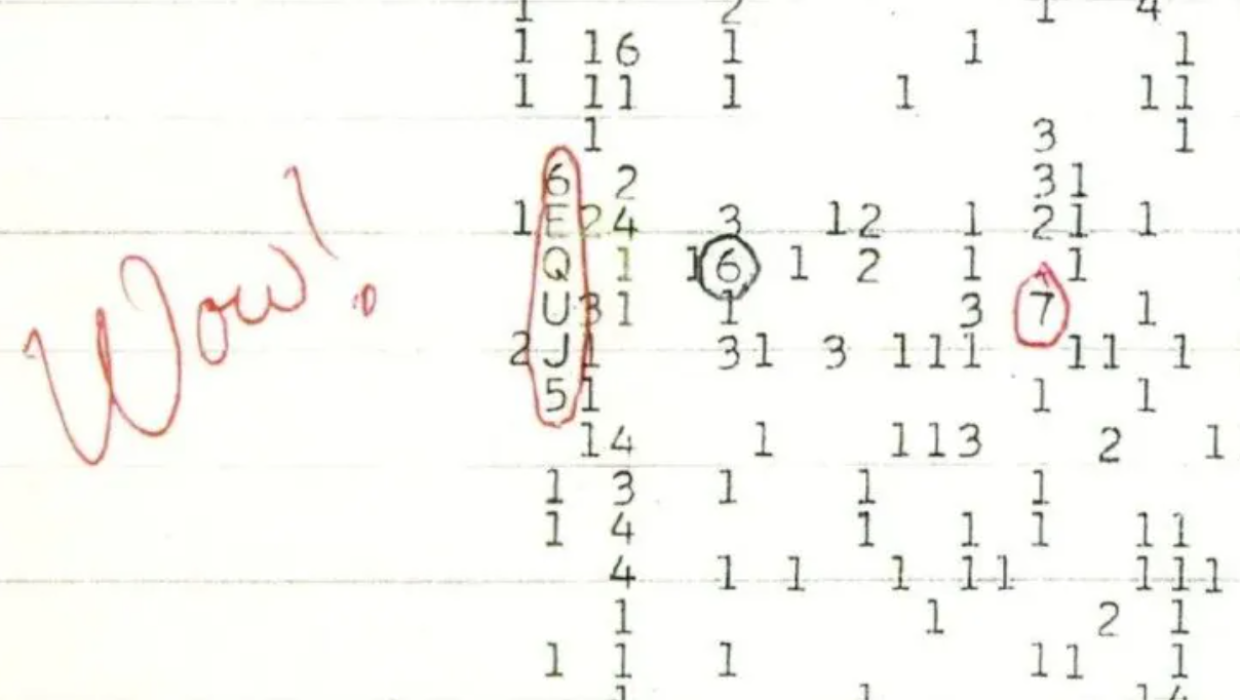Science
Scientists Unravel Mystery of 1977 Alien Radio Signal

A radio signal detected in 1977, often associated with extraterrestrial life, has likely been traced back to a natural origin. Researchers from The Ohio State University have conducted a detailed analysis of the signal, known as the “Wow! signal,” concluding it is not evidence of alien communication but rather the result of natural cosmic phenomena.
The Wow! signal, which lasted for 72 seconds, was first identified by astronomer Jerry R. Ehman during a SETI project at Ohio’s Big Ear radio telescope. It generated significant excitement and speculation about the existence of alien life. For decades, the origins of this signal remained a topic of intrigue and intense study.
Recent investigations led by Dr. A. J. DeMarco and his team at The Ohio State University focused on the characteristics of the Wow! signal. Their research, published in the journal *Astrophysical Journal Letters*, utilized advanced data analysis techniques to examine the signal’s frequency and timing.
Analysis Reveals Natural Sources
The findings suggest that the signal could be attributed to a series of natural cosmic events. By comparing the frequency of the Wow! signal with known data, the researchers identified a potential connection to hydrogen clouds, which are common in space. These clouds can produce radio emissions that might mimic the characteristics of a signal once thought to be artificial in nature.
Dr. DeMarco emphasized the importance of this study in understanding the universe. “While we initially considered the Wow! signal to be a breakthrough in the search for extraterrestrial intelligence, our findings highlight the need for caution and further exploration of natural phenomena,” he stated.
The research underscores the complexity of interpreting signals from space. Although the Wow! signal sparked imaginations worldwide, it serves as a reminder of the challenges involved in distinguishing between natural and artificial sources of radio emissions.
Impact on the Search for Extraterrestrial Intelligence
This new insight contributes significantly to the field of astrobiology and the ongoing search for extraterrestrial life. The SETI community has long sought to decode potential communications from beyond our planet. However, the recent study illustrates that many signals can arise from natural processes rather than intelligent civilizations.
As scientists continue to explore the cosmos, the Wow! signal remains a historical milestone in the quest to understand our universe. It highlights both the excitement and the skepticism that accompany efforts to detect extraterrestrial life. The research team encourages further investigation into other unexplained signals, as advancements in technology may provide clearer answers in the future.
In conclusion, while the Wow! signal may not be the beacon of alien contact that many hoped for, it has opened new avenues of inquiry. The exploration of cosmic phenomena continues to captivate scientists and enthusiasts alike, reminding us of the vast mysteries that still lie beyond our reach.
-

 World4 months ago
World4 months agoTest Your Knowledge: Take the Herald’s Afternoon Quiz Today
-

 Sports4 months ago
Sports4 months agoPM Faces Backlash from Fans During Netball Trophy Ceremony
-

 Lifestyle4 months ago
Lifestyle4 months agoDunedin Designers Win Top Award at Hokonui Fashion Event
-

 Entertainment4 months ago
Entertainment4 months agoExperience the Excitement of ‘Chief of War’ in Oʻahu
-

 Sports4 months ago
Sports4 months agoLiam Lawson Launches New Era for Racing Bulls with Strong Start
-

 World5 months ago
World5 months agoCoalition Forms to Preserve Māori Wards in Hawke’s Bay
-

 Health4 months ago
Health4 months agoWalking Faster Offers Major Health Benefits for Older Adults
-

 Lifestyle4 months ago
Lifestyle4 months agoDisney Fan Reveals Dress Code Tips for Park Visitors
-

 Politics4 months ago
Politics4 months agoScots Rally with Humor and Music to Protest Trump’s Visit
-

 Top Stories5 months ago
Top Stories5 months agoUK and India Finalize Trade Deal to Boost Economic Ties
-

 Health2 months ago
Health2 months agoRadio Host Jay-Jay Feeney’s Partner Secures Visa to Stay in NZ
-

 World5 months ago
World5 months agoHuntly Begins Water Pipe Flushing to Resolve Brown Water Issue









